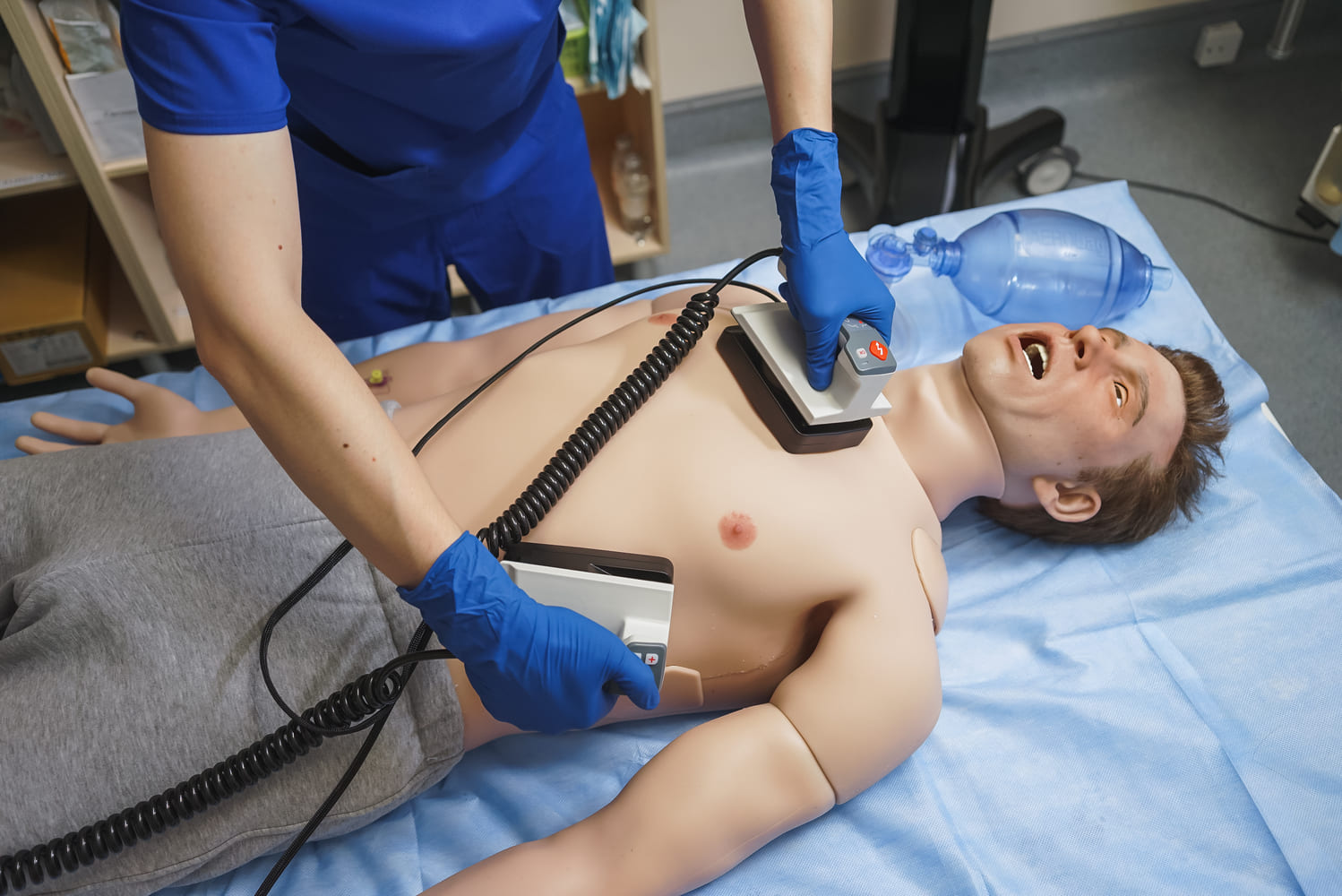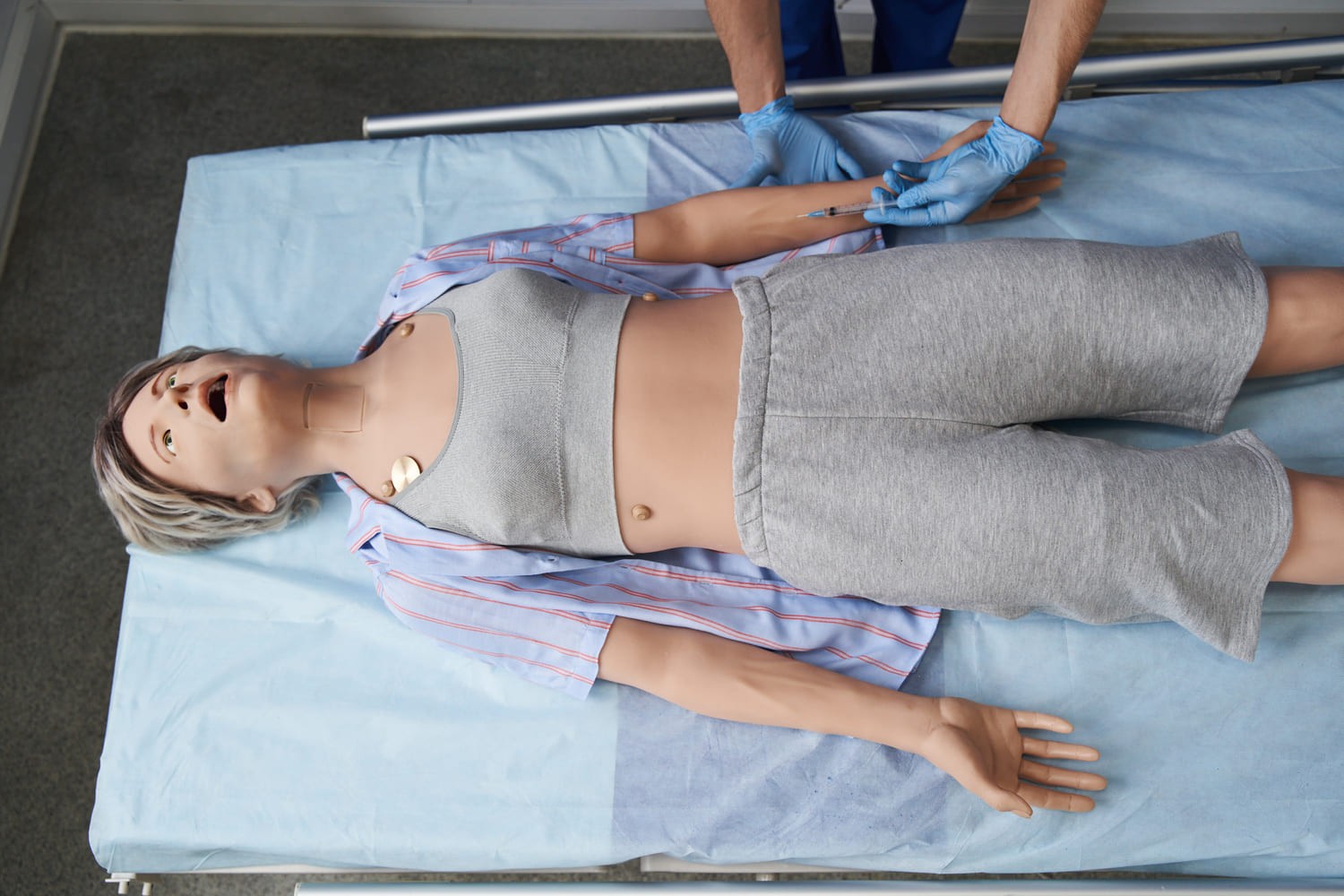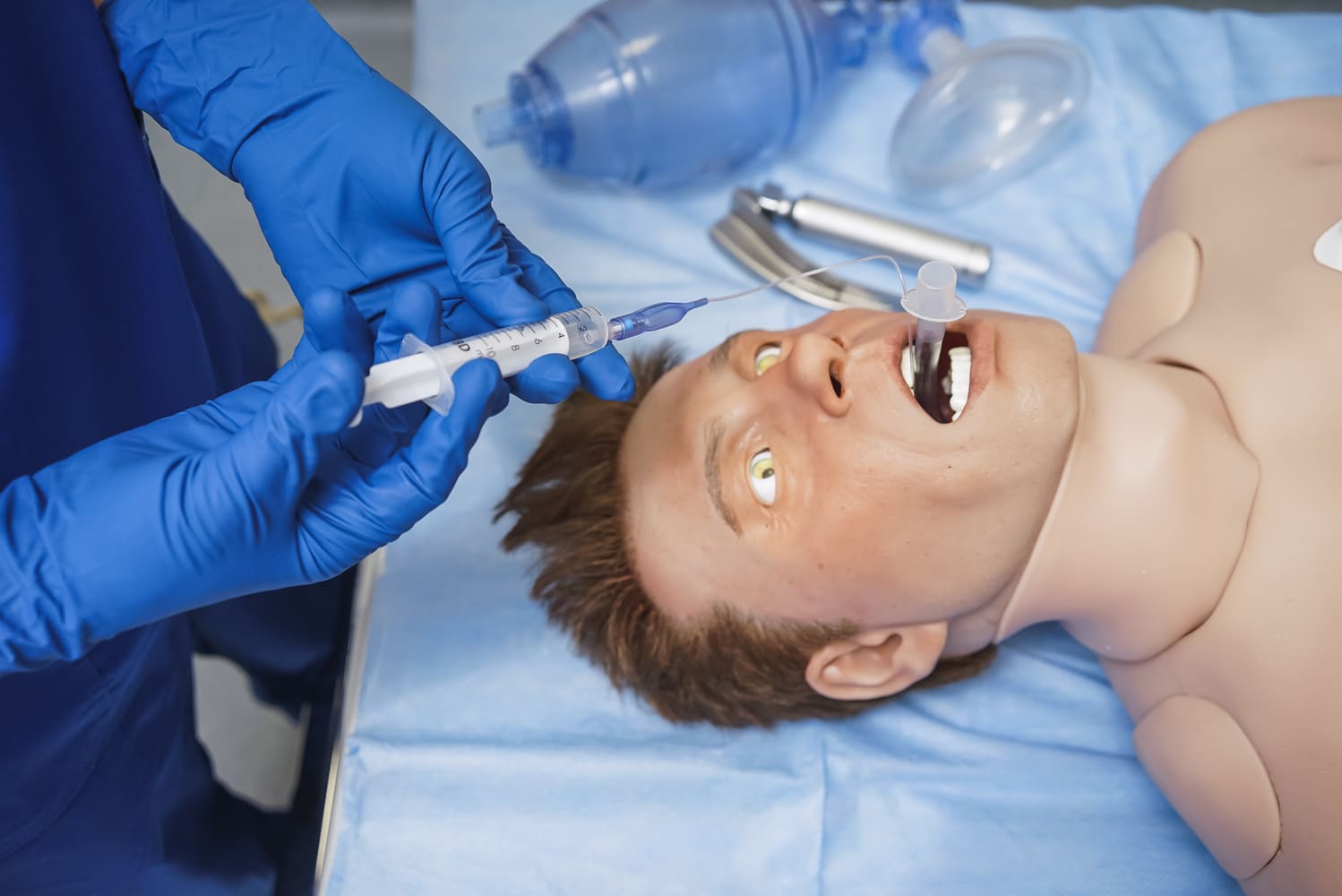
Nursing Simulation: The Future of Hands-On Healthcare Training
What is nursing simulation? It is an educational methodology that uses realistic clinical scenarios to train both students and professionals, providing a crucial link between theoretical learning and hands-on practice. Nursing simulation is not merely a tool — it's a transformative cornerstone in modern healthcare education. Picture preparing for a high-stakes medical situation, where every second matters, without the paralyzing anxiety of a real-life catastrophe. This is the crux of simulation in nursing education and nursing simulation — a realm where both students and seasoned professionals can explore, err, and perfect their clinical skills. Nursing simulators provide a hands-on, immersive experience that surpasses the confines of traditional learning methods, allowing learners to seamlessly integrate theory with the intricate nuances of real-world practice.
Simulation in nursing education is essential in nursing practice, especially in environments where the consequences of a single misstep can be catastrophic. In nursing simulators, mistakes aren’t permanent; they’re opportunities for refinement. This isn’t just about learning how to execute procedures — it’s about honing an instinctual response to medical crises, fostering an atmosphere of preparedness without the risk of real-life failure.

How Nursing Simulation Operates: A Multifaceted Approach to Learning
But how exactly does nursing simulation function? It’s a multifaceted approach to learning, driven by cutting-edge technology that mimics real-life clinical scenarios. Whether you’re a nursing student at the cusp of your career or a seasoned nurse seeking to refine your practice, simulation for nursing students in clinical nursing education is a liberating, low-risk platform to practice vital skills. The allure of simulation in nursing practice lies in its adaptability. Whether simulating routine assessments or acute medical emergencies, simulations are designed to reflect the full spectrum of medical realities.
Consider this: a nursing simulator that replicates neonatal care, allowing students to perform delicate procedures like resuscitation and monitoring vital signs. These aren’t just hypothetical situations — they’re meticulously designed, realistic simulations that require a deep understanding of human anatomy, physiological responses, and critical decision-making under pressure. High-fidelity simulation manikins further enhance this learning by providing tactile feedback and lifelike responses. The ability to engage in simulation for nursing students allows learners to explore every possible contingency without real-world ramifications.
Why Nursing Simulation is Indispensable for Modern Healthcare Training
Nurses are the frontline of healthcare. Their decisions are often the linchpin of patient survival. Simulation in nursing education equips them with the tools to make informed, confident choices in the most demanding situations. Through repeated exposure to simulated nursing practice, students can develop the cognitive flexibility and decision-making acuity required in real-world scenarios. In an arena where failure isn’t an option, simulation for nursing students provides a fail-safe mechanism for practicing under pressure.
Simulation activities for nursing students include a wide range of structured exercises, from routine patient assessments and medication administration to managing acute emergencies like cardiac arrest or trauma cases. These activities allow learners to actively apply theoretical knowledge, build procedural competence, and refine teamwork and communication skills in a safe, controlled environment.
Types of Simulation in Nursing Education
Understanding the types of simulation in nursing education is essential for designing effective curricula that meet diverse learning objectives. Nursing programs today employ a variety of simulation methods, each tailored to specific clinical skills and learning outcomes. High-fidelity simulation manikins allow students to practice procedures such as intubation, IV insertion, and neonatal resuscitation with realistic physiological responses.
Virtual reality (VR) and augmented reality (AR) platforms offer immersive environments where students can navigate complex clinical scenarios, from emergency room triage to operating room procedures. Task trainers focus on honing particular skills, such as catheterization or suturing, ensuring learners achieve precision before performing on actual patients.
Additionally, simulation activities for nursing students include role-playing, interprofessional team exercises, and scenario-based debriefings that reinforce critical thinking, decision-making, and communication skills. By integrating multiple types of simulation in nursing education, institutions provide a holistic learning experience, bridging the gap between theoretical knowledge and in clinical nursing education.
The Multifaceted Advantages of Nursing Simulation: Why It’s Integral to Healthcare Education
1. A Sanctum of Safe, Risk-Free Learning
The paramount advantage of nursing simulation lies in its ability to provide a risk-free, controlled environment for learning. It offers students the liberty to make mistakes — errors that are corrected, not punished. In an atmosphere where mistakes can be costly, the ability to fail and rebound is priceless. This environment nurtures self-assurance, diminishes performance anxiety, and, ultimately, contributes to superior patient outcomes. Simulation in nursing practice allows students to engage with a wide range of clinical situations, testing their response without compromising patient welfare.
2. Hyper-Realistic, Immersive Experiences
The sophistication of modern nursing simulators, such as those provided by MedVision, makes it possible to simulate patient care with extraordinary realism. These simulators not only replicate basic medical procedures but also recreate complex, nuanced patient interactions. MedVision’s Mia neonatal simulator, for example, offers an experience that immerses learners in the delicate procedures of resuscitation and monitoring neonatal vitals. The ability to engage with such immersive simulations cultivates a profound understanding of human anatomy, physiological dynamics, and the psychological aspects of patient care. Simulation for nursing students doesn’t merely prepare them to handle standard procedures; it challenges them to navigate a spectrum of medical conditions — from mundane ailments to high-acuity emergencies — fostering adaptable, well-rounded practitioners.
3. Economic Efficiency and Longevity
Compared to traditional educational models, especially those that involve live patients, nursing simulation is a highly cost-effective alternative. The initial investment in nursing simulators is negligible when weighed against the ongoing expenses associated with staffing, medical resources, and patient care in conventional clinical training. Additionally, the durability and reusability of simulation technology ensure that these tools continue to deliver value over time. MedVision’s Leonardo simulator, for example, is designed to handle repeated use, providing an enduring educational asset for healthcare institutions.

Frequently Asked Questions About Nursing Simulation
Breaking Down the Realities of Nursing Practice: Simulation vs. Theory
Theories are nice — in theory. But when you’re holding a tube of oxygen and defibrillator paddles in your hand, theories go out the window. Nursing simulation isn’t concerned with the stuffy, abstract rules you memorized from a textbook. It’s about real, in-the-moment decision-making. It’s about dealing with what you know is coming — and what you can’t predict. You learn to pivot, to adjust, and to function despite uncertainty. Simulation for nursing students provides that invaluable experience. In the end, it’s clear: nursing simulation isn’t just a passing trend. It’s a critical, transformative force in healthcare education. It allows nurses to develop the skills and instincts needed to save lives — before they’re ever in the position to do so. If you’re serious about nursing, you need to be serious about simulation. After all, no one ever became a great nurse by simply reading about it.
Learning by Failure: Why Mistakes Matter in Nursing Simulation
Here’s the inconvenient truth: if you’re not making mistakes, you’re not learning. It’s easy to coast through a textbook, acing all your theoretical exams. But it’s an entirely different beast when you’re facing the realities of patient care. That’s what nursing simulation is all about. It’s not about being perfect. It’s about failing — repeatedly — and using that failure to come back stronger. Think about it: when was the last time you learned something substantial from a lecture? Exactly. Most of us learn through failure, through trial, and through error. Simulation in nursing practice capitalizes on this by creating an environment where failure is inevitable — but not fatal. Nursing simulators push students to the brink of their abilities and then nudge them forward. Whether it’s incorrectly performing a procedure or misreading a set of vitals, you can’t avoid mistakes here. But unlike the real world, where one bad decision can end in tragedy, nursing simulation gives you the chance to learn from every blunder. And trust me, when you’re in a real-world crisis, you’ll thank yourself for making those mistakes early on.
Simulating the Impossible: How Technology Brings the Medical World to Life
Imagine being thrust into a critical care unit, surrounded by chaos: machines beeping, a patient’s vitals crashing, and nurses scrambling to stabilize the situation. Sounds like a nightmare, doesn’t it? But here’s the thing — nursing simulators don’t care about your nightmares. They make those nightmares come to life, and they do it better than you ever could in real life. It’s a controlled chaos, designed to mimic the harrowing realities of healthcare. Nursing simulation lets you practice managing crises — real crises. The kind that don’t come with a manual. When was the last time you really felt prepared for an emergency situation? Exactly. That’s where simulation for nursing students steps in. You can practice diagnosing, treating, and managing the unexpected — whether it's a sudden cardiac arrest or a trauma patient with multiple fractures. Sure, it’s not perfect. It’s not like dealing with a real patient. But what simulation in nursing practice does is create an artificial, hyper-realistic environment that brings you as close to the real thing as you can get. It doesn’t just build technical skills — it forces you to think on your feet, to make snap decisions, and to carry the weight of someone’s life in your hands.
The Dark Side of Traditional Learning: Why Nursing Simulation is a Necessity?
Let's not sugarcoat things — traditional nursing education, with its long hours in the classroom and endless theoretical droning, simply doesn’t cut it. Sure, it’s all well and good to talk about what you might do in an emergency, but real-world practice? That’s where the rubber meets the road. That’s where nursing simulation proves itself invaluable. It’s one thing to read about resuscitation; it’s entirely another to actually perform it on a nursing simulator that mimics a neonate’s struggling breaths. You can’t teach instinct, but you can sure as hell train it. Here’s the kicker: simulation in nursing practice is not some coddling exercise. It doesn’t treat students like delicate flowers. It challenges them, puts them on the spot, and demands they think critically, act decisively, and prioritize like they’re the last hope for the patient in front of them. Simulation for nursing students isn’t a sugar-coated field trip. It’s a brutal, no-nonsense scenario designed to bring out the best — and the worst — in them. And unlike real-life patients, these nursing simulators don’t die from your mistakes. They let you learn and evolve without the bloodshed. Simulation in nursing practice should be the foundation of every nursing program. Not just a supplement, but the core of it.
What types of scenarios are covered in nursing simulations?
Nursing simulators can replicate a vast array of medical situations, from basic health assessments to emergency interventions like cardiac arrest, trauma care, or pediatric resuscitation. This diverse range ensures that nursing students receive a holistic, comprehensive education, preparing them to manage every conceivable clinical challenge.
Can nursing simulation enhance clinical decision-making?
Absolutely. By participating in simulation in nursing practice, students engage in high-stakes scenarios that require quick thinking, prioritization, and sound decision-making. The ability to repeatedly practice these skills in a risk-free environment enhances their decision-making abilities and prepares them for the unpredictability of real-world nursing.
How does nursing simulation benefit nursing students?
Through simulation for nursing students, learners can immerse themselves in simulated clinical environments that mirror the challenges they will face in actual practice. It provides a hands-on experience with procedures and patient interactions that enhance their critical thinking, improve their skills, and build the confidence they need to perform under pressure.
What is nursing simulation, and why does it matter?
Nursing simulation is an advanced method of education that employs high-fidelity, interactive technology to recreate real-world medical scenarios. It’s critical because it offers students a safe, controlled environment to practice, make mistakes, and learn from them, all while gaining practical, hands-on experience that traditional methods cannot provide.
Why is simulation important in nursing education?
Simulation is crucial in nursing education because it provides a safe, controlled environment for students to practice clinical skills without risking patient safety. It allows learners to experience realistic medical scenarios, make critical decisions, and refine both technical and soft skills, such as communication and teamwork.
Is simulation suitable for experienced healthcare professionals?
Absolutely. Simulation is a tool for maintaining competency, mastering new techniques, and staying updated with medical advancements.
Immerse yourself in a demo to see how MedVision transforms traditional learning into an engaging, interactive experience
Subscribe for the Latest News!





